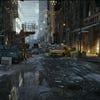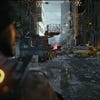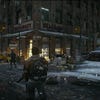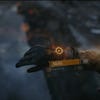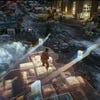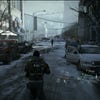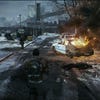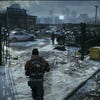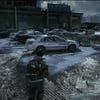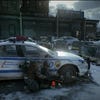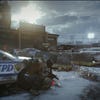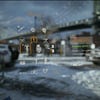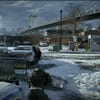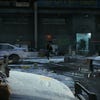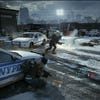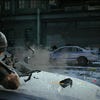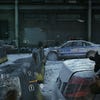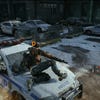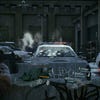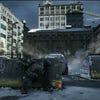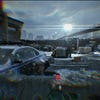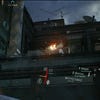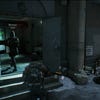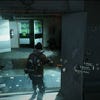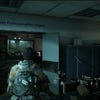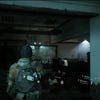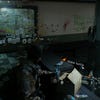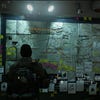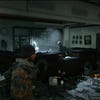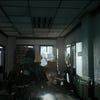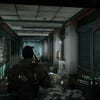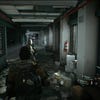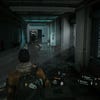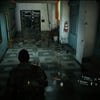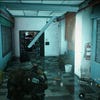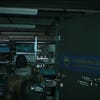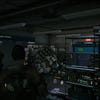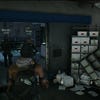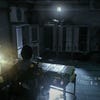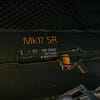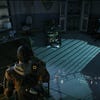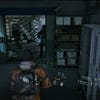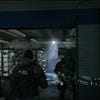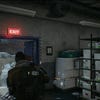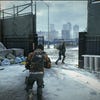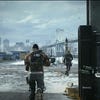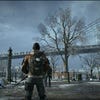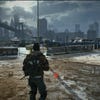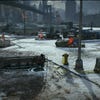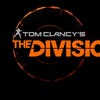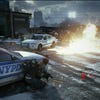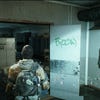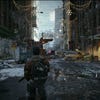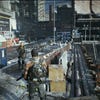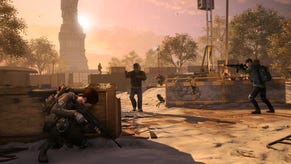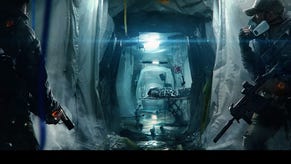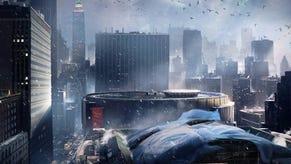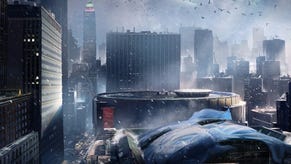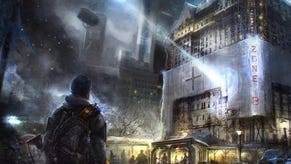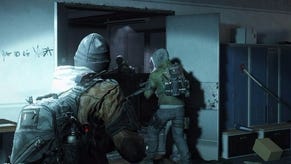Tech Analysis: Tom Clancy's The Division
Joy Division.
Showcased playing live on PlayStation 4 as the zinger to Ubisoft's otherwise trailer-strewn conference, The Division reinvigorates our expectations of next-gen gaming. With its always online, post-pandemic take on New York City, it features a slew of advanced effects-work and physics that are hard to believe could be possible on current console technology. It's the technical pin-up of the moment, taking the mantle previously held by Ubisoft's own Watch Dogs (and the now sadly defunct Star Wars 1313 project) as indicators of what could be achieved with exclusive development on PS4 and Xbox One.
Swedish developer Massive Entertainment is at the heart of this operation, bringing to life this new open world RPG/shooter hybrid, as played from a third person perspective. Given how its seven minute demo doesn't bring to bear its online features to the absolute fullest extent, the striking attention to world detail is inevitably the part that stands out most. Everything is heightened over what we've come to expect of console gaming, from the increase in particles effects spewing from Molotov explosions, to the streets littered with debris and Christmas trimmings on the blink. It's gorgeous in motion, but given Ubisoft's history in delivering major franchises to as many platforms as humanly possible raises the question: is this truly only possible on next-gen hardware?
If the description of its Snowdrop engine is to be taken at face value, The Division works with technology specifically designed with next-gen platforms in mind. It cites dynamic global illumination, procedural destruction and a broad push for greater environmental detail and effects as its major strengths - but it doesn't quite do itself justice with that list. What its lengthy slice of gameplay does show in earnest is a widening of the play-field to support an always-online universe, where draw distances for geometry and reflection mapping alike necessarily show no apparent bounds. Never has high street filled with garbage, scurrying rats and ruined yellow taxis looked so compelling for a solo adventurer - but just as with any good photo-shoot, lighting is crucial to generating that appeal.
"The Division is the next-gen technical pin-up of the moment, taking the mantle previously held by Ubisoft's own Watch Dogs and the now sadly defunct Star Wars 1313 project."
The most attention-grabbing visual highlight is revealed at the beginning, with clear plumes of steam rising from sewers grates being coloured by blinking red brake lights. Concurrent light sources stand at an unprecedented level in the trailer from the word go as well, as the camera pans from the city rooftops to the ground level of the derelict streets. Wound-up trees and canopies flicker with seasonal decorations - still electrified - and every detail on the street is caught and refracted in each puddle and glossy car exterior. Usually this is an area of compromise for PS3 and 360 sandbox big-guns like Grand Theft Auto 4, where only select parts of the world are mirrored. Seemingly, this is a luxury that can now be comfortably afforded.
Indoors, lighting comes into its own with torch-lights being directed by other squad members, plus light-shafts streaming through unbarred windows. By means of the rallying signs, maps and post-it notes, The Division's higher resolution texture-work also means we can piece together a personal narrative for how the city has dismantled up until this point. Based on our high quality direct feed of the playthrough used for this analysis, the game world is uncompromising in these micro details. The strength of the PS4 hardware being as such, adopting a smooth anisotropic approach to filtering textures is trivial to overall performance, as much as it is for the modern PC gamer.
There's certainly a repetition of some elements though; the graffiti seen on concrete road blocks is duplicated, but their irregular placement means it's not really noticeable. Shadow filtering is the only true limitation to be spotted in rendering such a vast world. On approaching Main Street there's a clear cascade running across the buildings to the right - a line that needs to be crossed before shadow detail materialises. A light flickering to character shadows is also evident as squad members walk through low-key lit indoor areas, and the jagged edges aren't too far removed from the better current-gen implementations.
There's no certainty if tessellation is factored in for geometry, but polygonal detail is very high across the board: from the corrugated cylindrical vents to crumpled boxes, sagging under their own weight. It's likely the case that these bits and pieces are instanced to spare the console repeatedly using the same vertex data. We do see common geometry for trees, but much like the textures they're positioned in ways that make this cost-saving trick harder to spot. Otherwise, incidental details like torn cloths fluttering on building-sides, floating debris and dust, and flocks of birds bring a dismal world to life in style.
"If there's one thing that makes The Division stand out as a next-gen title, it's the interplay between multiple elements such as the lighting, effects and the advanced physics."
When it comes to physics, chip damage to car windshields and concrete road-blocks at least show a gradual whittling down of cover is possible. It's also the case that damage is dependent on a bullet's specific impact point, rather than simpler approximations. This is unlike the bigger, pre-defined chunks that chip off scenery in Battlefield 3's campaign mode. Character animations are also comparable to DICE's flagship shooter, looking automated in nature as they reach to close car doors, while pressing past NYPD vehicles used for cover.
But if there's one thing that makes The Division stand out as a next-gen title, it's the interplay between all these elements: the lighting, effects and physics. When bullets are fired at billboards, for example, the game doesn't just leave behind a bump-mapped texture in its place, but instead creates holes for light-shafts to stream through. This is based on the precise point of attack. In a similar fashion, a light bar is seen dangling from a single wire during earthquakes, flickering and lighting upset dust dynamically as it swings unhinged. It's a superb atmospheric flourish on the surface, but the crucial take-away is that it's now also an interactive component of the world.
But what can be said of performance in its current state, still so far away from completion? The Division's frame-rate is a solid 30fps based on what's shown so far, with only hints of dips to 28fps during grenade explosions. There's also a faint stuttering effect as a result of irregular frame ordering - it's still 30 on average, but we can sometimes see two unique frames in a row, followed by two duplicates that can make motion feel uneven - the same artifact we saw in the PS4 Need for Speed: Rivals playthrough at the EA conference. Tearing is also present but difficult to spot, being mostly contained to the bottom 50 pixels of the buffer used during the analysis. Here, we just get the idea that the framebuffer isn't being flipped at the right point - an issue that should be easily resolved.
"The Division's frame-rate is a solid 30fps based on what's shown so far, with only hints of an impact to performance during grenade explosions."
Running at a full 60fps is still an unfulfilled dream based on the evidence here, but there's plenty of time for the game's target to change between now and its release. For those itching to see it run at 60 and beyond, the prospect of an unrestricted PC version of The Division ultimately comes down to public interest. Petitioning is recommended by Ubisoft as one way to vent your views on the matter, and sure enough, over 114,000 people are pretty keen on the idea so far. However, given Massive Entertainment's huge pedigree on PC over the last decade, plus Ubisoft's all-inclusive approach to developing on multiple platforms with franchises like Assassin's Creed, we'd dare to say that a PC release is an extreme likelihood in the long run. It's just a matter of when the announcement is dropped.
But when it comes to the core question of whether this post-apocalyptic adventure could see a PS3 or 360 release, we're talking in very different terms. The interplay between effects and physics here eclipses most games on current-gen consoles, but it's fair to say that equally complex shooters like Battlefield 3 and Crysis 3 prove that where there's a will, there's always a way. With enough aggressive nipping and tucking anything is possible for such a game - but then we must ask whether we'd still accept the end result. This is a salient issue, given how strongly The Division is being sold as Ubisoft's chiselled, gleaming mascot for next-gen potential. On the flipside, given how expensive AAA game development is, there are around 100m reasons to add current-gen versions to the roster of supported hardware.
In the build-up to this Christmas, steering clear of announcements for other platforms makes great business sense. As an incentive for buyers to make an early leap to PS4 and Xbox One, it subtracts one reason for gamers to drag their heels by buying a simplified current-gen port. We'll have to see whether Ubisoft holds strong on this front as demand for the game ebbs and flows in the coming months and just how extended the upcoming "cross-gen" era of production will be, but if nothing changes, it'll certainly be a winter 2014 to remember for Xbox One and PS4 owners.




